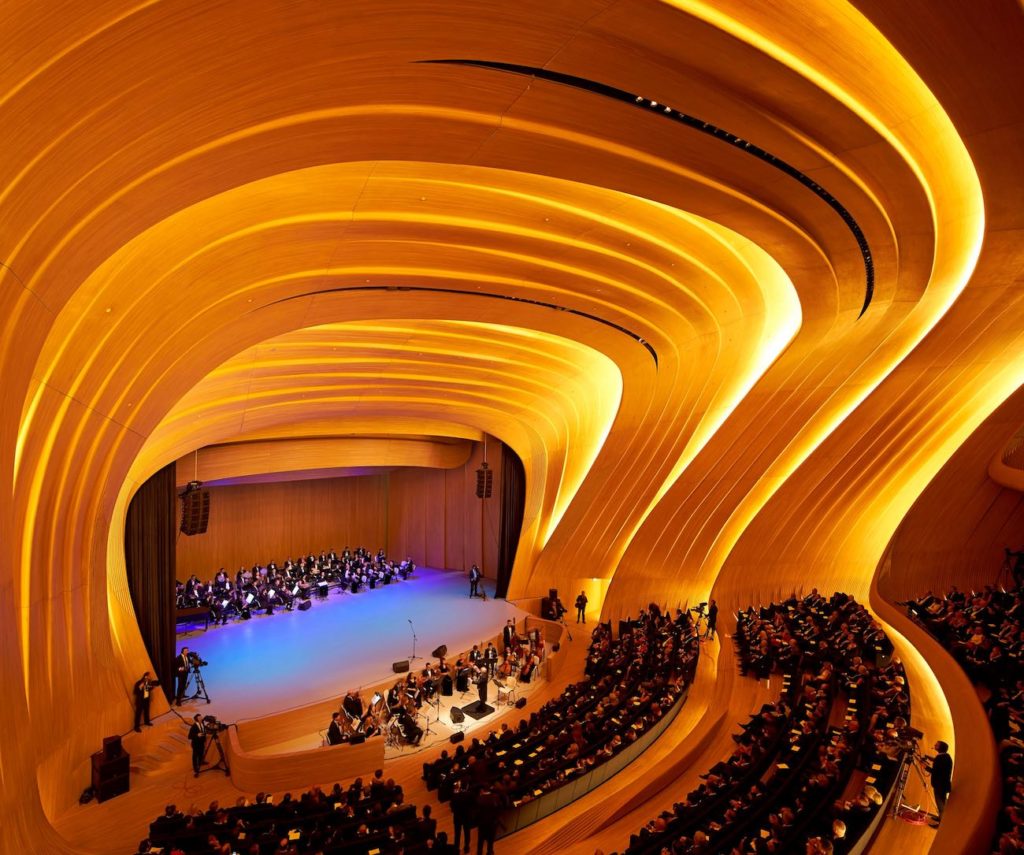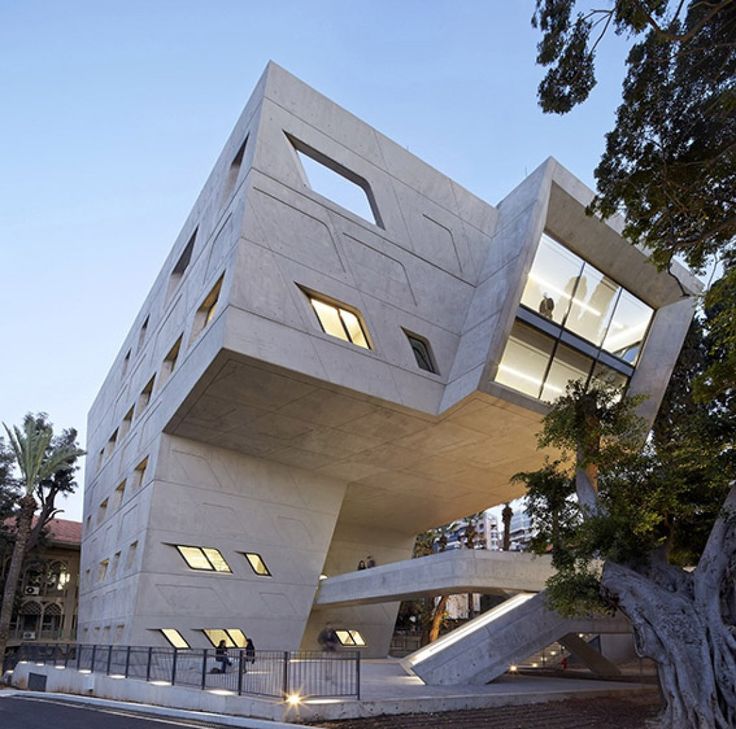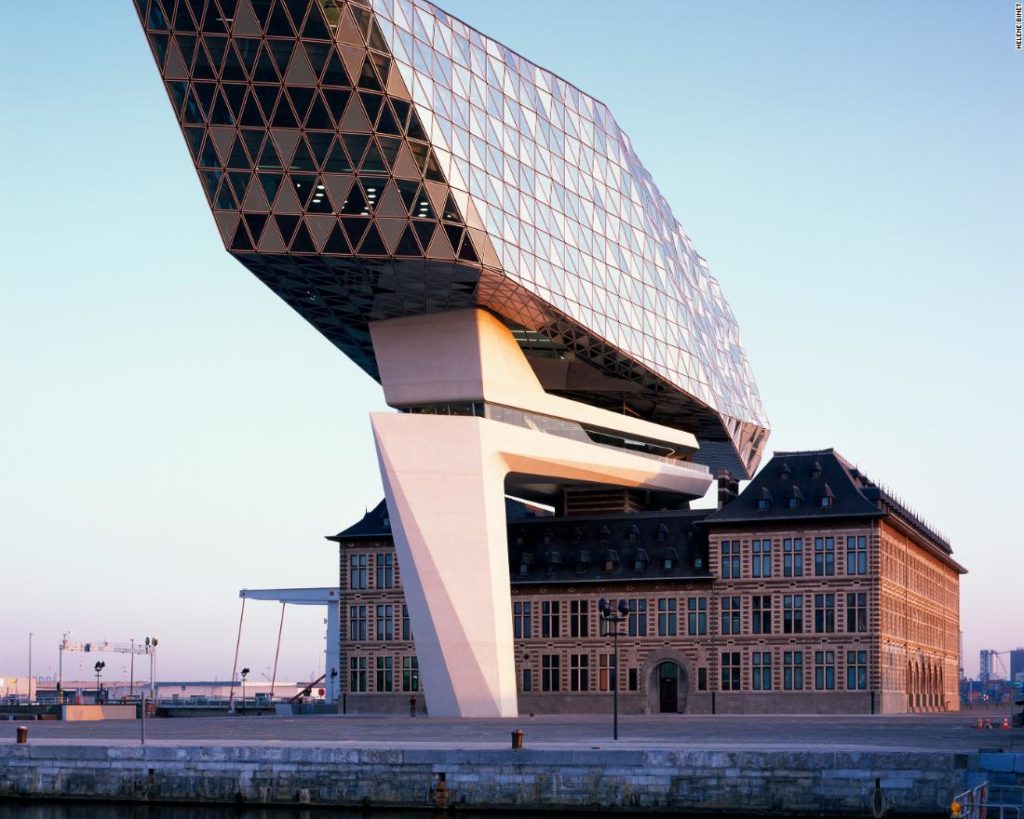From Beirut to Beijing, Zaha Hadid’s distinctive buildings have transformed skylines around the world. Nicknamed the “Queen of the Curve,” the late architect will be remembered for her bold, fluid designs, including London’s Olympic aquatics center and the Heydar Aliyev Center in Azerbaijan.

The only government building Hadid built, this structure serves as the Antwerp Port Authority’s head office. A nearby square was renamed Zaha Hadidplein in honor of the late architect. Credit: Helene Binet

A modern Beijing landmark, Galaxy SOHO offers another example of Hadid’s signature curves. They flow down from the building’s four towers to a subterranean courtyard that was inspired by traditional Chinese architecture. Credit: Hufton+Crow

One of the most recognizable buildings in Azerbaijan’s capital, Baku, the Heydar Aliyev Center is typical of Hadid’s flowing architectural style.
Credit: Hufton+Crow

Featuring an 1000-seat auditorium, a museum and a number of other cultural facilities, the structure was shortlisted for the World Architecture Festival’s World Building of the Year award in 2013. Credit: Hufton+Crow

Named after former president, Heydar Aliyev, the building was the source of significant controversy for Hadid, due to criticisms of Azerbaijan’s human rights record. Credit: Hufton+Crow

Completed the year before Hadid’s death, The Investcorp Building forms part of St Antony’s College at the University of Oxford. Part-funded by Hadid’s brother, Foulath Hadid, the facility is dedicated to Middle Eastern studies. Credit: Luke Hayes

After launching a design competition, The American University of Beirut chose Zaha Hadid’s proposal for its new Issam Fares Institute building. Completed in 2014, the facility features a 100-seat auditorium and a group of smaller rooms that appear to “float” above the main exterior courtyard. Credit: Hufton+Crow

Built for the Hong Kong Polytechnic University, this 15-story tower can accommodate 1,800 students and staff. Credit: Doublespace

Despite its name, the 1000 Museum in Miami is actually a 66-story residential complex due to open next year. The building features a curved concrete exoskeleton and large glass panels designed to glisten in the Florida sun. Credit: ZH

Part of a huge regeneration project in Marseille, the structure comprises both a 482-foot tower and an adjoining annex. Completed in 2011, this was Zaha Hadid Architects’ first built tower. Credit: Hufton+Crow

Completed in 2014, d’Leedon is a sprawling complex consisting of seven residential towers and 12 semi-detached villas. Credit: Hufton+Crow

More angular than many of Hadid’s creations, the Eli & Edythe Broad Art Museum is a contemporary art gallery at Michigan State University. The building’s eye-catching facade is made from pleated stainless steel and glass. Credit: Hufton+Crow

The building’s 2,000 triangular glass panels nod to Antwerp’s history as a diamond trading city. Credit: Hufton+Crow

Hadid insisted on retaining the site’s original building, a disused fire station. Credit: Helene Binet

One of Hadid’s best-known buildings, the London Aquatics Centre was created for the 2012 Olympic Games, and has since been modified for public use. Its undulating form was inspired by the movement of water. Credit: Hufton+Crow

Completed in 2015, the Dominion Office Building can be found in Moscow’s Sharikopodshipnikovskaya Street. Signature curves soften the edges of the building’s vertically stacked layers. Credit: Hufton+Crow
But while Hadid lives on through her neo-futuristic buildings, the company she founded is hoping to further honor her legacy with a new book — the first to be published about her work since she died of a heart attack last year.
Hadid’s signature style
Through a series of drawings and photographs, “Zaha Hadid Architects: Redefining Architecture and Design,” highlights some of Hadid’s most memorable creations. Despite some notable omissions, such as the Guangzhou Opera House, the collection of over 30 buildings offers insight into the Iraqi-British architect’s unique take on form, function and geometry.
The book presents a heavy bias towards the later, more polished stages of Hadid’s career (the vast majority of the featured buildings were finished after 2010). But, consequently, it also profiles 12 new projects which will be completed posthumously, including the terminal building for Beijing’s new international airport and a collection of sleek towers in Brisbane, Australia.
From our partners:
Established in 1980, Zaha Hadid Architects continues to operate following its founder’s death. The firm’s principal, Patrik Schumacher, contributed an essay to the new book that discussed her signature style.

Hadid’s intricately variegated curves offer more adaptive versatility to push into irregular sites … to give room to internal requirements where needed,” Schumacher writes. “The curves and curvilinear compositions display lawful and coherent trajectories that we can recognize as coherent and legible figures, each with its own poise, dynamism or degree of fluidity.”
This feature originally appeared in CNN.















